Family Diving at Kids Sea Camp in the Cayman Islands
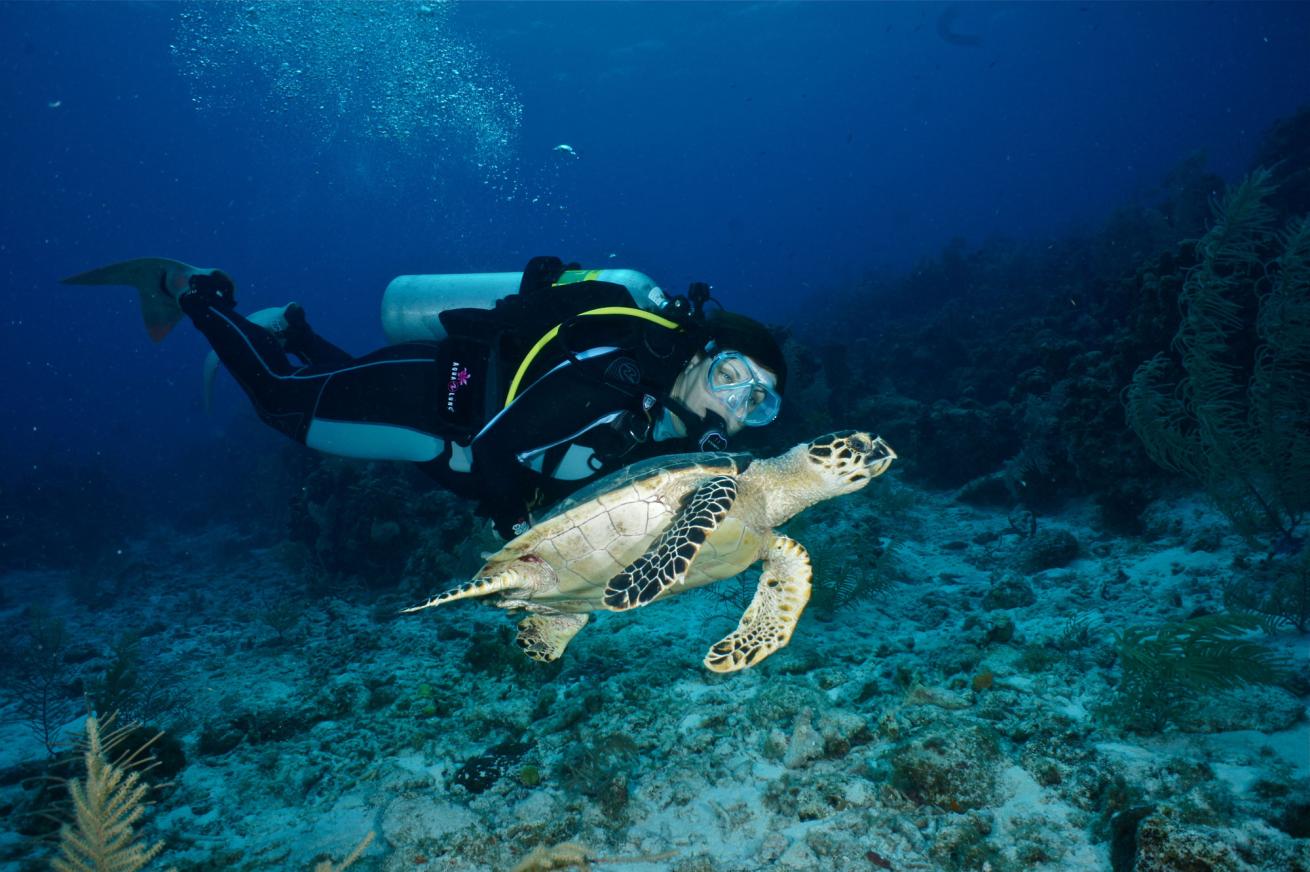
Mark EvansPenney Evans befriends a turtle as she explores the west coast of Grand Cayman.
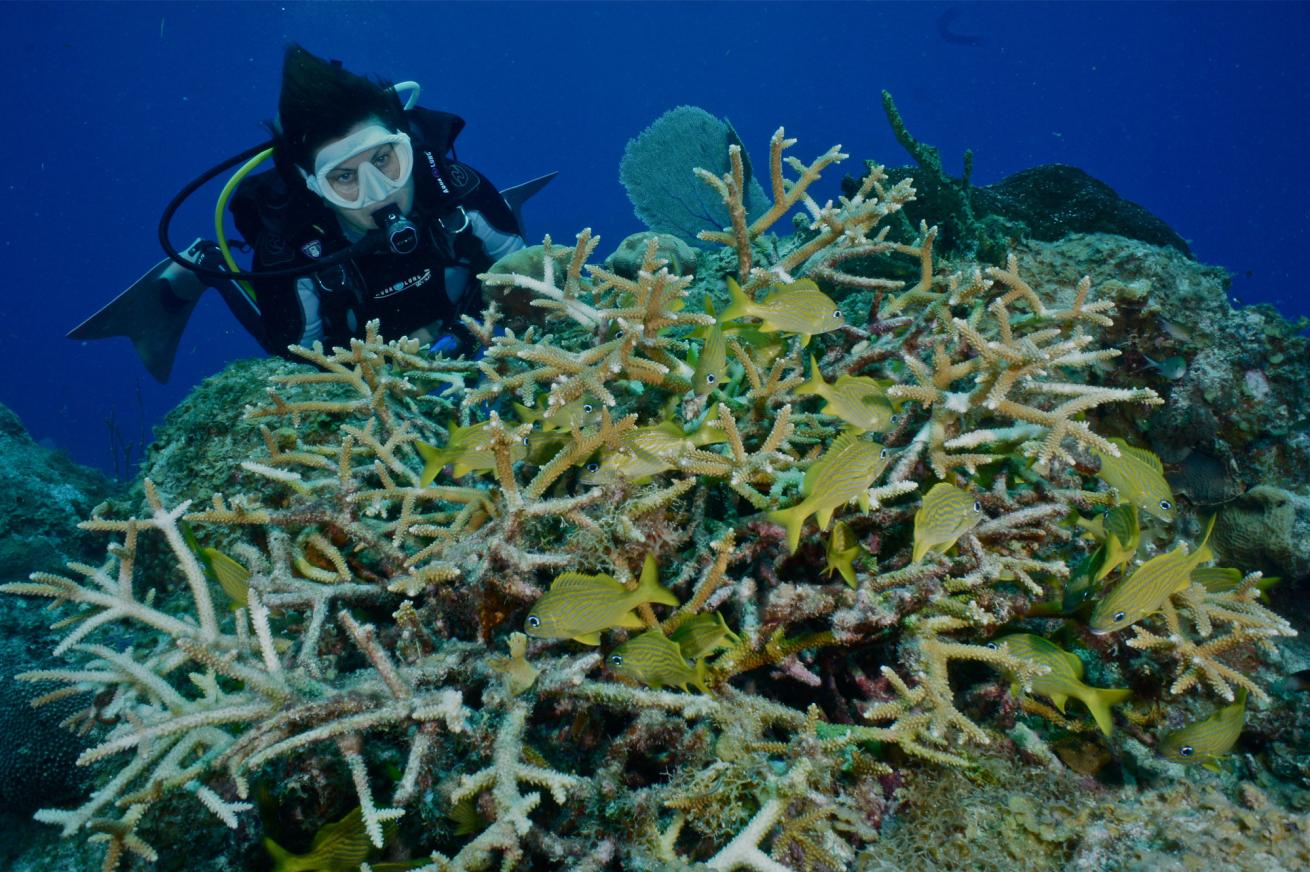
Mark EvansPenney Evans enjoys her "adult" time at Kids Sea Camp.
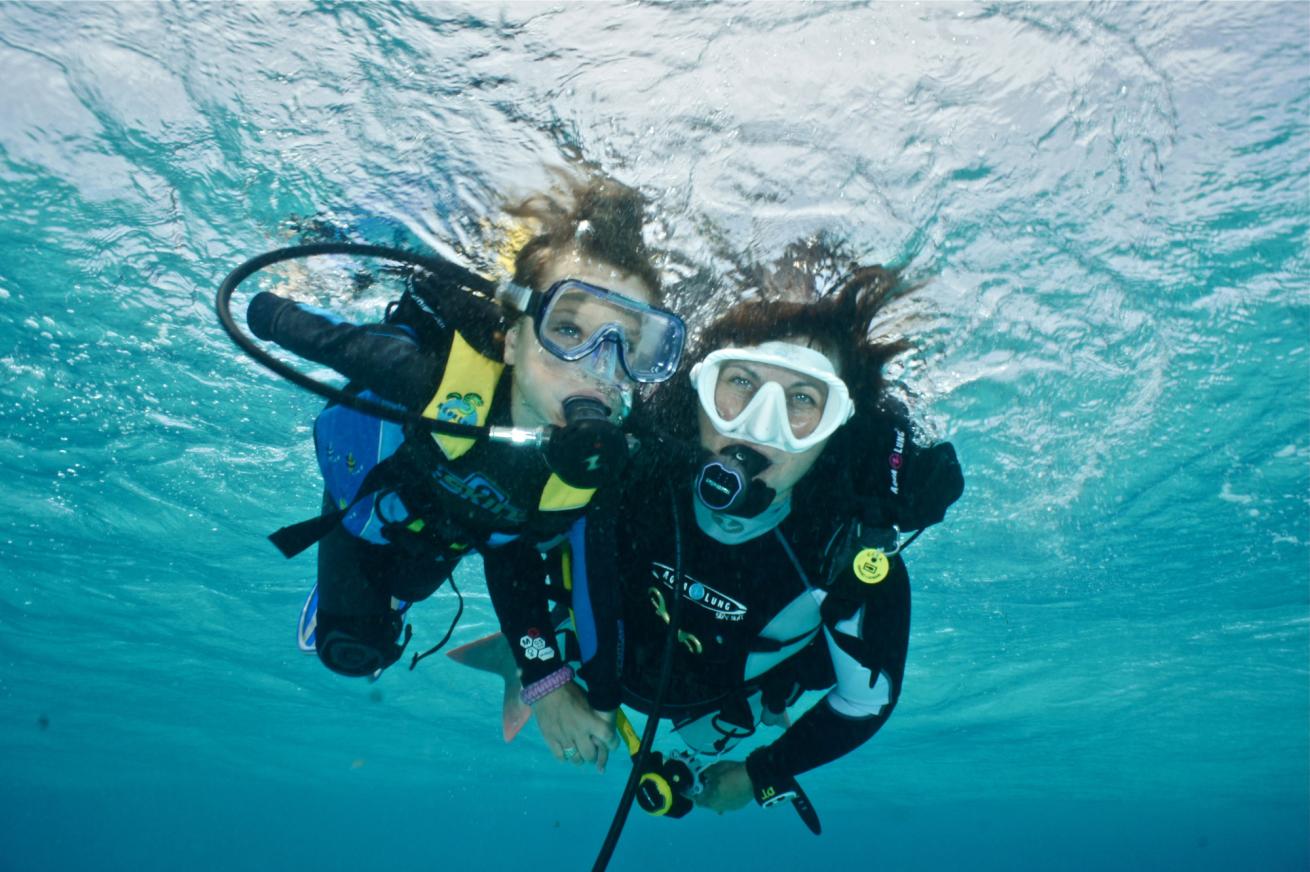
Mark EvansPenney Evans accompanies her son, Luke, as he uses his SASY unit.
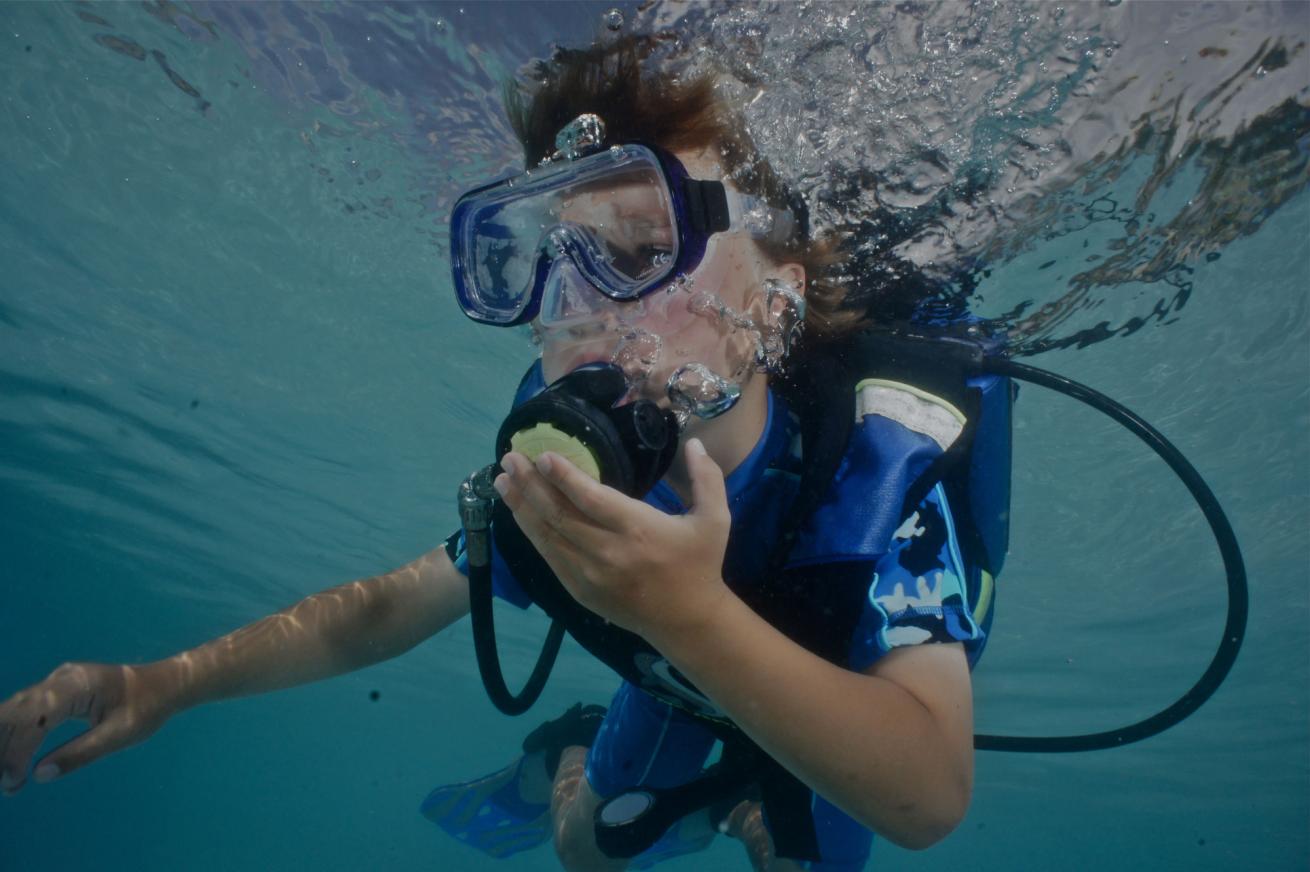
Mark EvansLuke Evans learns Surface Air Snorkeling for Youth (SASY) at Kids Sea Camp.
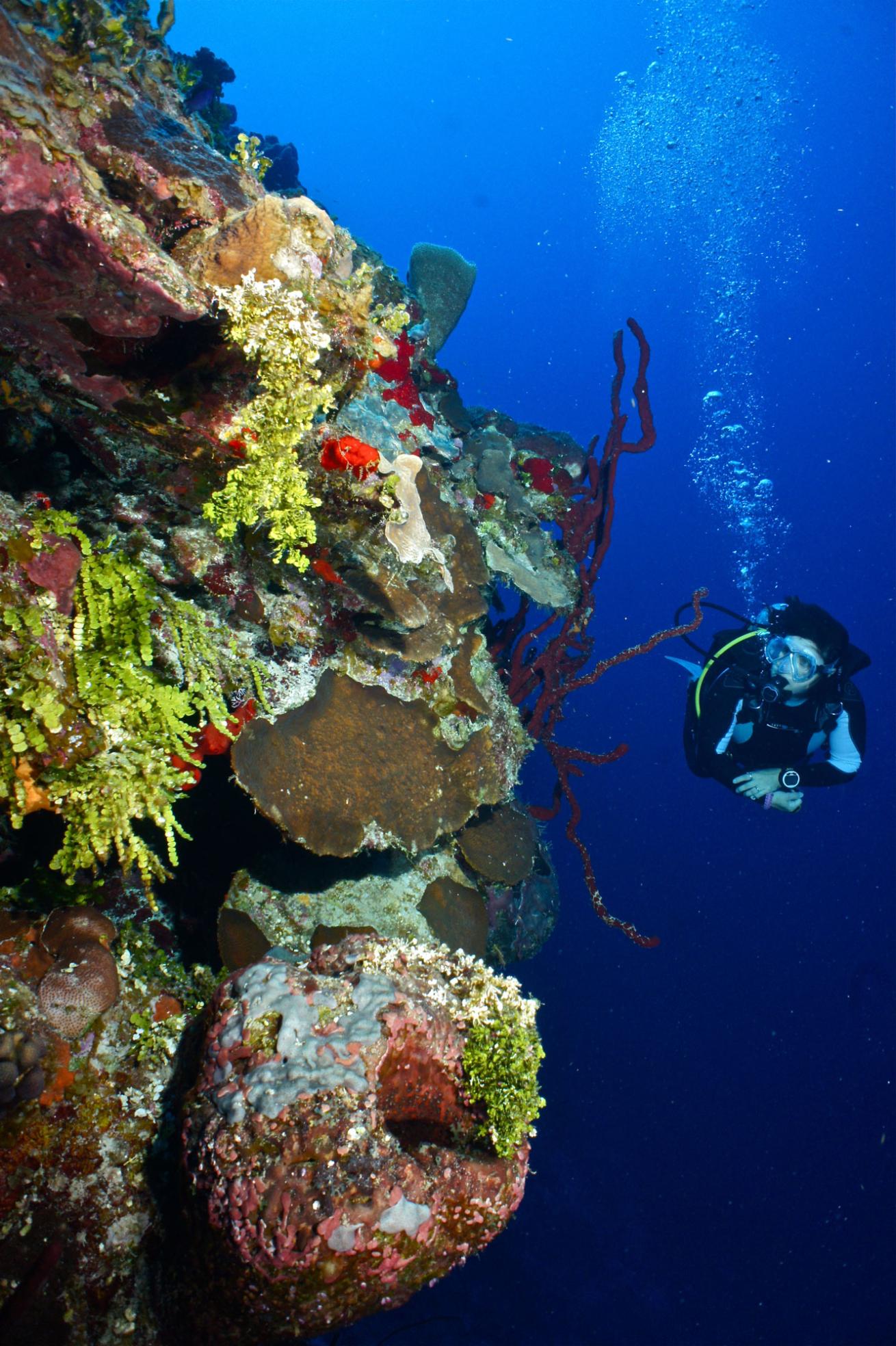
Mark EvansThe adults enjoyed the varied walls and sites off Grand Cayman while the kids did a host of activities.
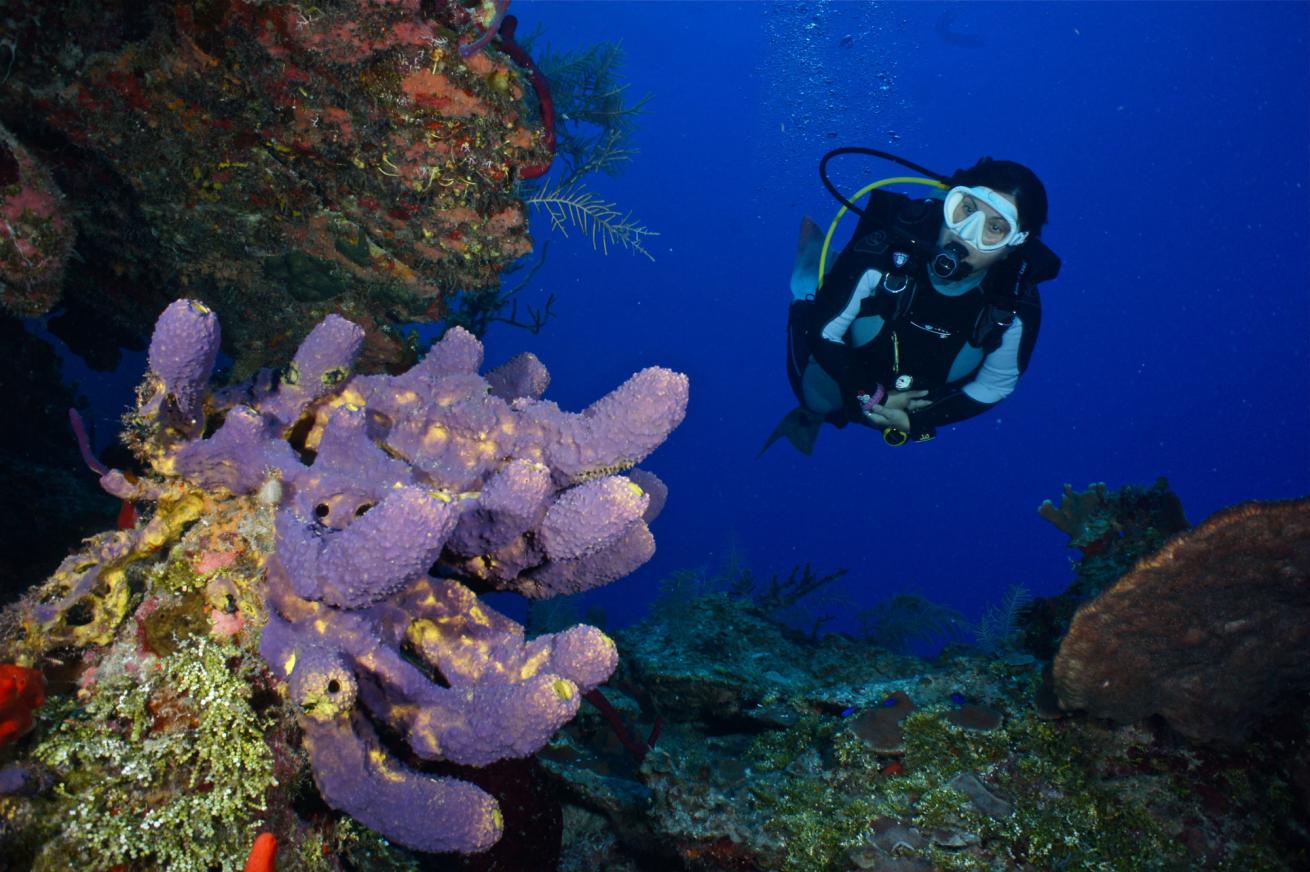
Mark EvansPenney Evans explores another Grand Cayman site.

Mark EvansPenney Evans explores the Kittiwake.
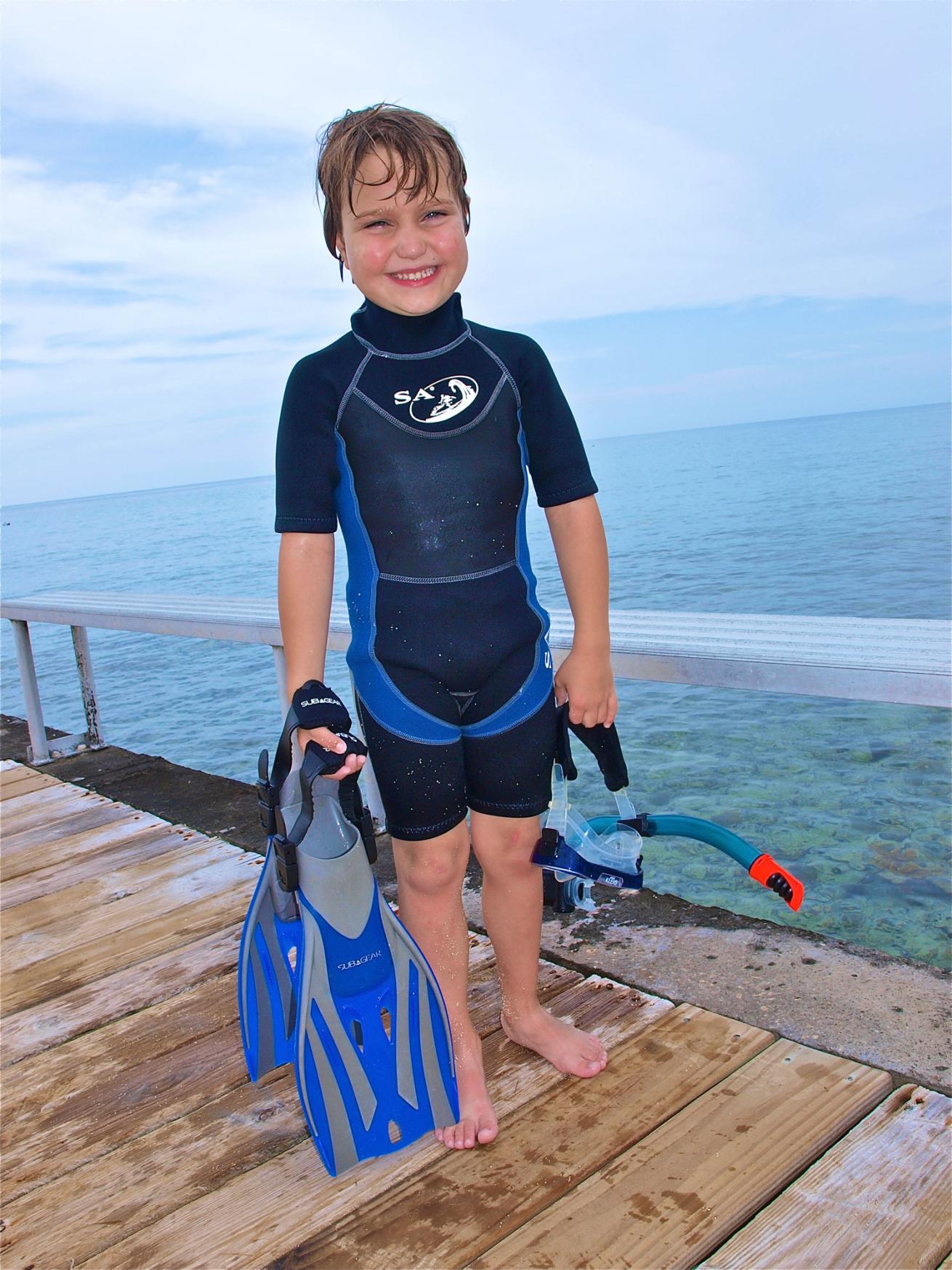
Mark EvansLuke Evans is more than a little excited to learn to dive at Kids Sea Camp in Grand Cayman.

Mark EvansLuke Evans learns all about diving gear and equipment while at Kids Sea Camp.
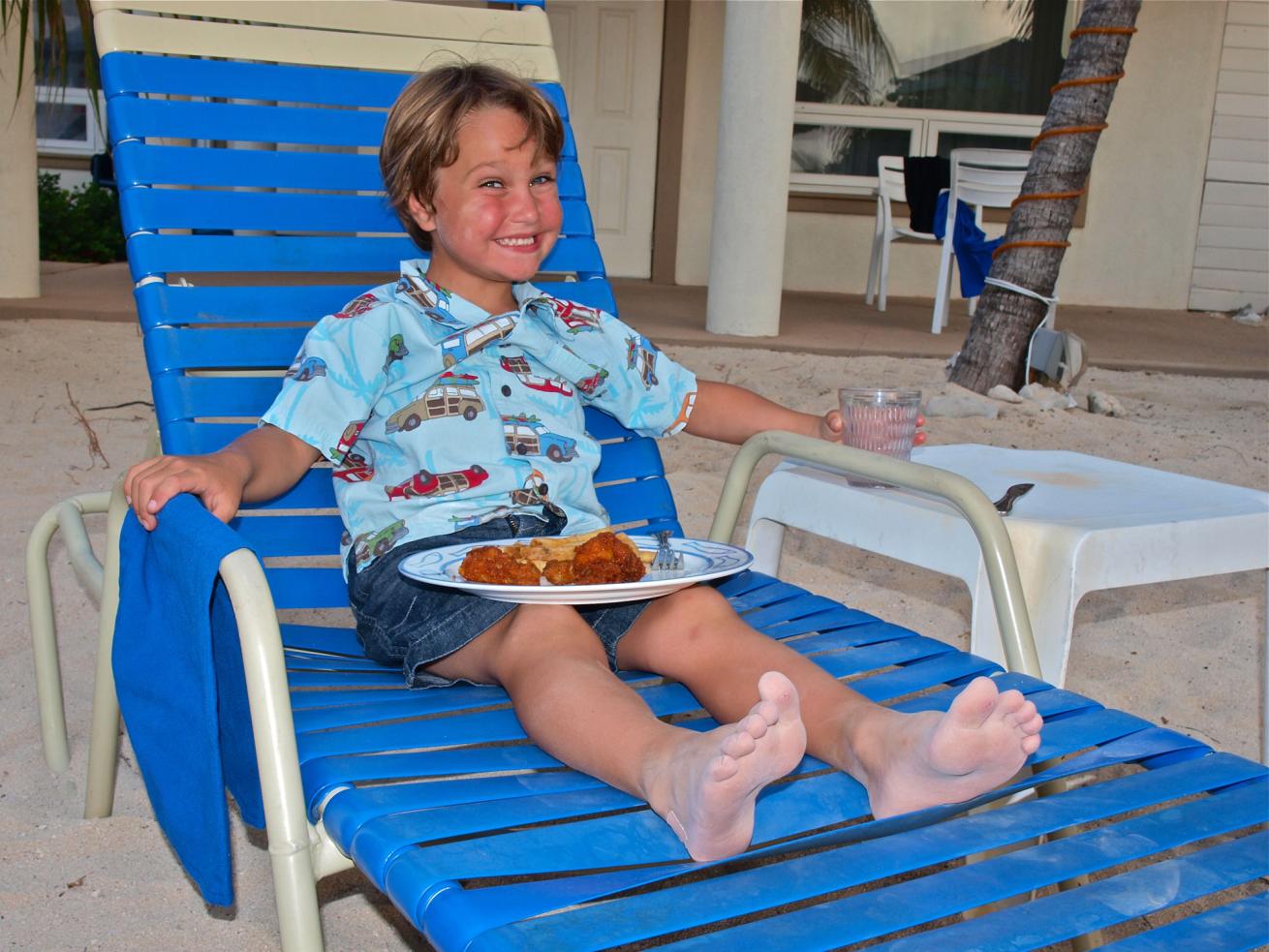
Mark EvansLuke Evans takes a break from the water to enjoy the sun — and some food!
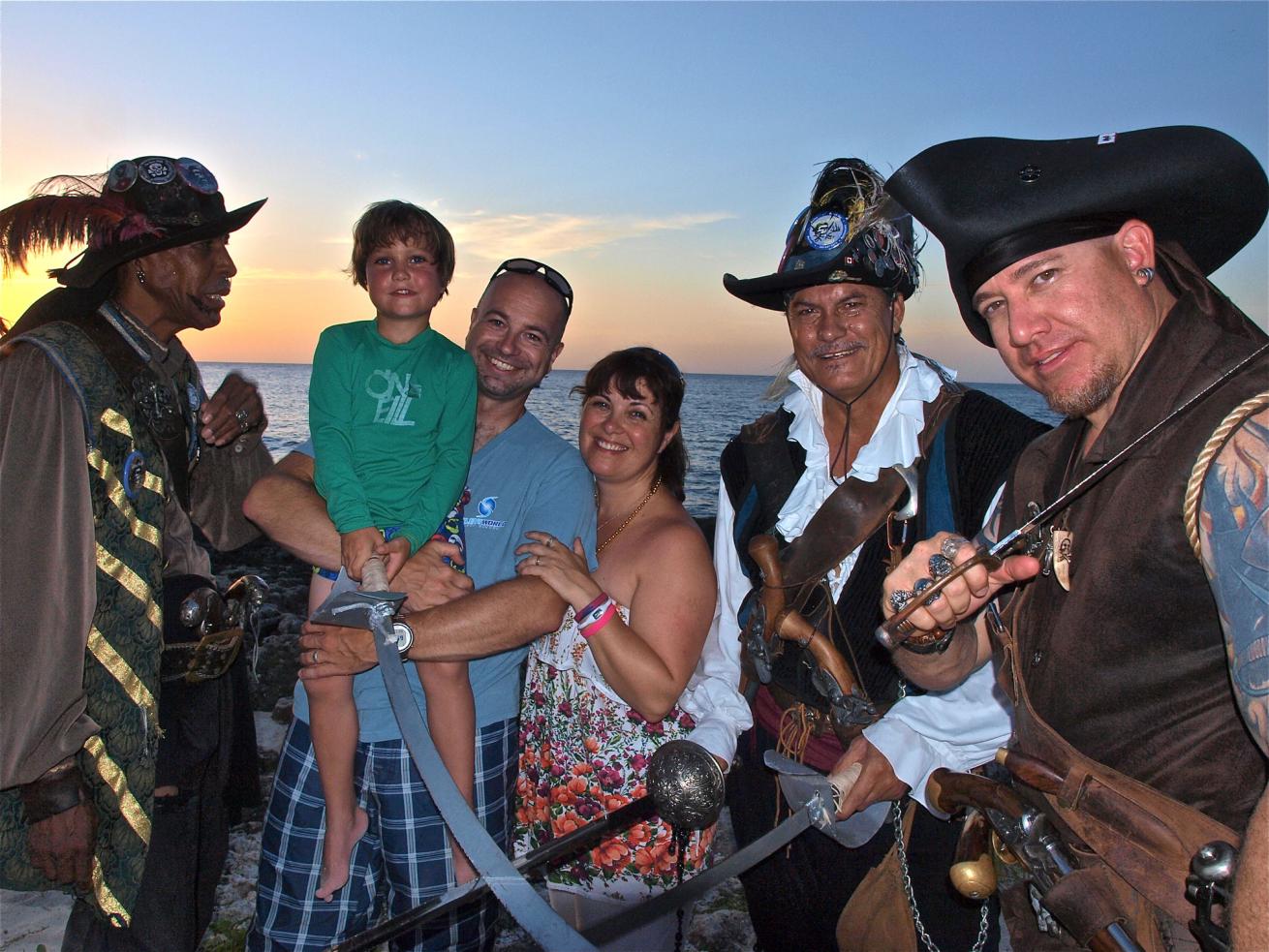
Mark EvansShiver me timbers! Luke and Penney Evans pose with a few pirates at the resort at Kids Sea Camp.
“Will I see sharks?” “Am I really going diving?” “Will there be other kids like me?” “Can I dive a shipwreck?” “Is it going to be really warm in the water?” “Will I see sharks?” “Can I actually hold a turtle?” “Can we go on the beach?” “Are there crabs in the Cayman Islands?” “Will I see sharks?”
These were just some of the questions constantly being fired at me from the minute I let my 5-year-old son Luke know that we were heading out to Grand Cayman on an assignment to check out Kids Sea Camp. Given that he has been surrounded by diving paraphernalia from the day he was born, it is probably not a surprise to hear that he loves all things to do with the oceans, and while he had dabbled with a bit of snorkeling on our family vacations in Wales, he’d never been somewhere with warm, clear waters teeming with marine life and — after seeing lots of photographs taken in the Cayman Islands — to say he was more than a little excited was an understatement.
I’d been invited to Kids Sea Camp in the Cayman Islands in 2011, but at that time, Luke would only have been 4, which meant he would not have been able to participate in the SASY (Surface Air Snorkeling for Youth) program, which has a minimum age of 5, so I declined and postponed the trip for a year. Now he was stoked to be going snorkeling and trying out SASY for the first time. A SASY unit basically comprises a dinky little cylinder, a tiny BCD packed full of high-density foam and a standard regular (albeit fitted with a smaller mouthpiece). Children can happily swim to their heart’s content, breathing away through the reg, the foam in the jacket keeping them firmly on the surface, but as far as they are concerned, they are diving — just like mom and dad do.
Cayman, here we come!
The direct flight to the island with British Airways — via a brief stop in Nassau in the Bahamas — passed without incident, with Luke glued to his seat-back TV screen or the iPad, and on arrival in Georgetown it was nice to step out into the warm, humid Cayman temperature. We picked up a rental car from Andy’s, and we were off, cruising past the famed Seven Mile Beach en route to our home for the week — Cobalt Coast, located up at the northwest tip of the island.
Cobalt Coast, and its on-site dive center, Divetech (Divetech has since moved to its Lighthouse Point location), has been working with Kids Sea Camp for several years, and is one of only a handful of locations that runs two KSC weeks back-to-back each year. Located right on an iron shore "beach," with its own little jetty taking you to the dive boats and the start of the reef, Cobalt Coast is a charming little dive resort. The rooms in the main unit all have ocean view and are situated around a pool and the bar/dining area. Behind this building and across a quiet street are the garden rooms, but everything is within a couple of minutes walk.
Divetech is set right next to the pool, and there is a small shop, plenty of equipment tables, rinse tanks, drying racks and storage lockers. There is a shore dive straight off the end of the jetty — and the same applies at sister-property Lighthouse Point a short drive south — and the two dive boats head out each morning on a two-tank trip.
The daily routine.
Kids Sea Camp at Cobalt Coast is full-board, so on a morning, you headed downstairs and filled up on a hearty buffet breakfast before dropping your child off in their respective sector — Luke was in the "Turtles" with four other kids in his age group — and climbing on board your dive boat to depart for the morning.
Returning to Cobalt Coast after your two dives, you could sit down and enjoy a tasty buffet lunch, safe in the knowledge that your children were in good hands. Around 1.30 p.m., we would retrieve Luke from his Turtles counselors and spend the afternoon as a family — snorkeling, collecting hermit crabs on the beach, swimming in the pool, etc. One day we took Luke out off the dock for a snorkel and he was perfectly content in 5 meters of water, nearly exploding with excitement when we pointed out an octopus, a peacock flounder and a small southern stingray.
Dinner was, once again, buffet-style and more often than not, there was an evening presentation or slideshow, or some form of "event," such as when a bunch of pirates "invaded" the resort, before everyone made their way to bed. All I can say is they must have been tiring days for children and parents alike, as was one of only a few dive trips I have been on where the bar was empty by 9 p.m.!
There was a board on display breaking down the week into days, and at a glance it was easy to see what your child would be doing on any particular day. The dive shop also displayed what boat the adult divers would be on, and when it would be leaving the dock, so it really was a "one-stop-shop" for information.
As the week kicked off, as well as going snorkeling and SASYing in the pool, the Turtles went off on all manner of day trips, including sandcastle-building and swimming on Seven Mile Beach, playing in the water park at Camana Bay, going on a treasure hunt around Cobalt Coast and doing some marine-art sessions with paints and clay.
Meanwhile, my wife Penney and I jumped on our dive boat and headed off to some of the superb wall and reef dives off the west coast. Cayman’s waters are full of marine life, and we were treated to large shoals of chromis, snapper and grunts, not to mention southern stingrays, eagle rays, octopus, tarpon and numerous turtles, from juveniles to small adults. The sheer walls, adorned with colorful sponges and soft corals, tumbled into the abyss, and the endless blue of the water was emphasized by the 30- to 40-meter visibility.
Stingray City
We were well into the swing of things by now, and Luke was in his element with his four Turtle buddies. He’d been snorkeling in the pool and the sea, and had done SASY in the pool, so was dying to get into the ocean for some "real diving," as he put it. On the Wednesday, mid-way through the trip, as we headed off to the wreck of the Kittiwake, his wish came true — Luke and the Turtles went to Lighthouse Point, the sister resort of Cobalt Coast, for their first experience of sea-SASYing. When we got back from our morning of wreck diving, we were immediately pounced on by our son, who regaled us with tales of diving on anchors and cannons from ancient shipwrecks. Suffice to say, the first trial of SASY in the sea was an overwhelmingly positive experience!
However, this was just a precursor to the main event. The finale of the week was going to be a family trip to Stingray City. This world-famous dive spot lies in just 4 meters, but is renowned for the large southern stingrays that flock to the area in search of a morsel of food from the Divemasters. Being so shallow, it is perfect for the younger participants of Kids Sea Camp — the 8- to 10-year-old Seals could dive and be in the thick of the action, and the Turtles could SASY on the surface and still see what was going on. As you read above, it certainly ticked all the boxes for Luke! It was quite choppy as we headed out to the site on our dive boat, and all the Turtles looked — understandably — a little nervous. Penney opted to do a spot of adult-SASY and removed all the weights from her BCD so she could remain on the surface with Luke, while I prepared to dive underneath them in an attempt to get some photographs of them as they swam about.
Unfortunately, only a handful of stingrays put in an appearance, but it was still a fascinating experience for Luke. He wasn’t too pleased with the surface chop, and half the shots I took show him bent at the waist flailing his arms in a vain attempt to get underwater, but once he spotted his first stingray, there was no stopping him! However, he made it clear that he was ready for the next step — “when we do that again, I am definitely diving to the bottom with you,” he firmly told us.
Conclusion
I had heard of Kids Sea Camp over several years, and liked the idea of organized groups split into age ranges, so they would be doing activities in and out of the water that were aimed at them. Founder Margo Peyton has done a great job in building up a network of venues in countries around the world where she holds Kids Sea Camps, and there is a seamless blend of snorkeling, diving, art, conservation, learning experiences and, most of all, plenty of fun for all ages. The adults are well catered for by the diving operations, and it is comforting to know that your precious children are being looked after by experienced staff — I think Luke had more fun than we did! It is no wonder that KSC has a high number of repeat clientele, and it was nice to see kids bonding with friends they’d made the previous year(s). Luke is ready to go again right now, so it definitely ticked all the right boxes for him, but I reckon we’ll have to leave it a couple of years until he is eight and able to do the Seal team activities, specifically actual diving, otherwise he will not be impressed.










